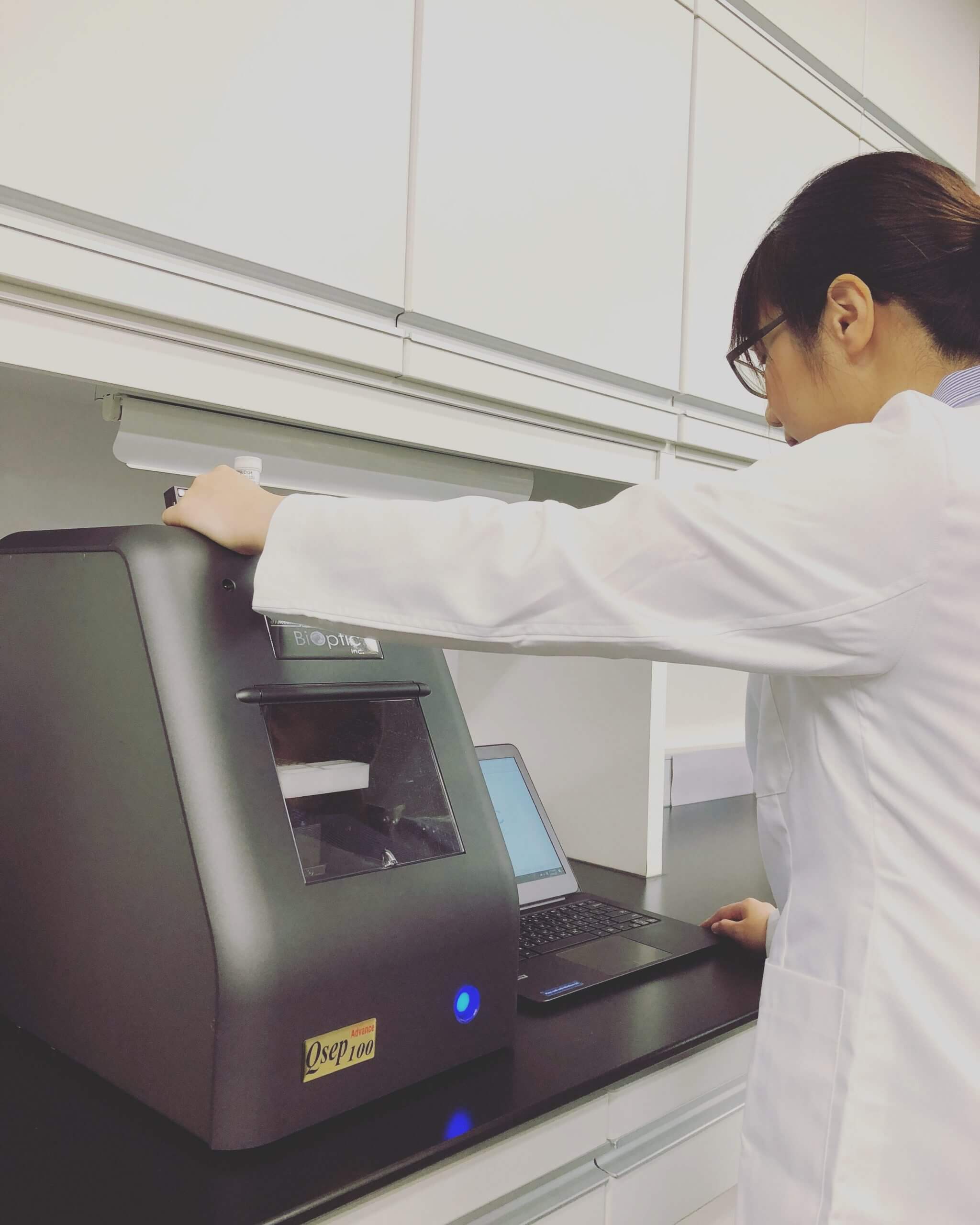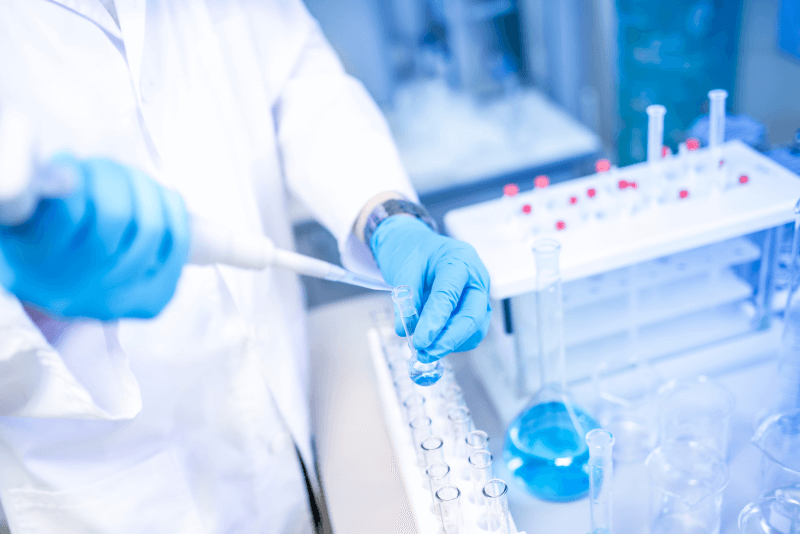Cross-generational Competition in DNA Sequencing: Examining the Key Role of Capillary Electrophoresis (CE) in NGS
The human genome project was completed in 2003. It took the course of 13 years to sequence 3 billion nucleotides. Since then, over half million people have their complete genome sequenced. Today, the most advanced sequencer can complete forty eight human whole genome sequencings simultaneously in just two days. Thanks to the Next Generation Sequencing (NGS) technology which allows a large volume of nucleic acid fragments to be sequenced synchronously and generates high-throughput data. Which substantially exceeds the first generation capillary electrophoresis (CE) sanger sequencing technique. Advancements in technology has reduced the gigantic room-size NGS sequencer to a bench top system, while reinforcing its computational capacity and analyzing capability to accommodate increased amounts of information. With the popularization of NGS, applications in various fields, such as scientific research, clinical medicine, agriculture and animal husbandry. And soon to be launched and mandated national securitypopulation screening, the big question is: “Are the results of NGS reliable?”
The QC checkpoints in NGS workflow you need to know
NGS Workflow can be divided into 4 major steps. Each step requires QC checkpoint, to be incorporated into the NGS workflow, which will help sequencing results to be more accurate and reliable [1]:
- Sample collection: Before DNA sequencing, target nucleic acids needs to be purified from tissue, cells, or microorganisms followed by PCR amplification. Quality control of collected DNA sample should be performed to ensure the concentration, purity, and integrity of nucleic acid. Concentration of nucleic acid must be accurately measured that meets the minimum amount requirements before library preparation. If the samples were contaminated by other nucleic acids or chemicals, it may cause excessive noise, decreased sensitivity, or reduced efficiency of downstream enzymatic reaction. Furthermore, if the integrity of the nucleic acids fragments are low, it may cause incompleteness of the sequencing information or indistinguishable of the signals. Those factors will have an impact on the sequencing results and qualities.
- Library preparation: Prior to sequencing, the DNA samples must be fragmented to an optimal size range. This can be done by physical or enzymatic treatment. The fragments will be labeled according to the sequencing requirements of different NGS instruments. A High-quality library of nucleic acid fragments are major component for NGS success. Therefore indications of library quality are: 1) distribution of fragments size before and after modification/amplification, 2) fragment concentration, and 3) total amount of fragments. This QC checkpoint is important because the size of the nucleic acid changes after fragmentation, modification, and amplification. The NGS system is designed to sequence nucleic acids in a specific size range. A library that contains fragments outside of the range will affect the quality of the data. Therefore, the size of nucleic acids in sample library must fall in an appropriate range for detection and without other impure fragments that may cause interference.
- Library selection and target enrichment: To improve the efficiency of NGS, targeting and amplifying the region of interest with PCR plays a crucial role. It is important to ensure your target regions and amplified nucleic acids fragments are correct. Therefore a necessary quality control step will verify the concentration and integrity of amplified fragments after amplification.
- Sequencing and bioinformatics analysis: Sequencing and analyzing the sequencing data will also determine the success or failure of the entire process. Leaving aside the technical issue in informatics such as algorithms, comparative databases, and comparative methods, the most important checkpoints in QC are to verify the integrity and accuracy of sequencing results. Many applications of NGS are aiming to find specific nucleic acid variant as reference for evaluating the successfulness of the experiments as basis of medical decision. Therefore, it is also important to verify the existence of any nucleic acids variants.
Applying new generation technology to improve NGS quality
While NGS system provides a large amount of sequencing data, it is important to incorporate a systematic workflow to manage the quality of sequencing samples to ensure the size of DNA fragments and various parameters under testing condition. A simple, rapid, and economical method for monitoring DNA is ideal for real-world applications. Currently there are two technologies that meets the above requirements: fluorescence quantification and capillary electrophoresis (CE) [3]. In recent years, with the advent of desktop capillary electrophoresis machines, such as the Qsep Series by BiOptic Inc., Advanced Analytical Fragment Analyzer or the lab-on-chip of Agilent Bioanalyzer, has become a must-to-have technology for quality control of the NGS [3].

CE‘s role in the NGS QC checkpoints
CE uses the principle of micro-fluidic based electrophoresis to separate nucleic acid’s fragments. Since the whole process is performed in micro-capillary, the required amount of sample is low and the electrophoresis time is short. On top of the advantages in sample consumption and processing time, CE can provide ten times higher in resolving power than the traditional agarose gel electrophoresis. Based on these advantages, CE is often used in the following NGS quality control checkpoints:
- Analyzing integrity of nucleic acids: Purified nucleic acids can be examined by CE to check its condition of degradation. This process can avoid misuse of highly degraded nucleic acids for subsequent library preparation.
- Nucleic acids sample quantification: Although fluorescence spectrometry is the common approach for quantifying nucleic acids amount, CE can evaluate the actual concentration of nucleic acids. CE’s electropherogram clearly reveals the concentration of nucleic acids which can help confirming the analysis result of fluorescence spectrometry. Especially the existence of adapter dimer in nucleic acid fragment library cannot be distinguished by fluorescence spectrometry which may further affect the amount of sequencing data.
- Analyzing size distribution of nucleic acid fragments: During library preparation, nucleic acids are fragmented into specific size and subjected to various labels and disposals for subsequent sequencing. The construction of library can be time-consuming and laborious, and quality of the library can directly affect sequencing outcome. Therefore, analyzing the size distribution of fragments with CE is usually performed after each steps of preparation including trimming, end modification, target selection, and fragment amplification to ensure that nucleic acid fragments are not overly degraded, no primers or other label residues contaminations, and the fragment size is within the sequencing limit of the sequencer to avoid incomplete or false negative results.
Importance of NGS quality control: in NGS cancer panel
Currently there are NGS cancer panels for detection of tumor types and the presence of specific genetic variants, which can be used as a key reference for subsequent treatment options. False positive or false negative result may lead to different clinical outcomes which could have major impact on patient diagnosis and treatment plan. The use of the NGS cancer panel in combination with CE-based QC process can help provide a more accurate and reliable NGS data. A recent study in acute myeloid leukemia (AML) focusing on detection of gene variants was published in the journal of the Association of Clinical Scientists (ACS). The study reported that automated CE fragment analyzer can significantly increase the detection throughput and shorten the time of the test. The research group used the desktop Qsep100 analyzer in the study, and claimed that the mutation property analysis function of Qsep100 analyzer appropriately suits the testing and quality controll needs of medical institutions [4].
Overcome the bottleneck in NGS technology?
As early as 2011, a research team from Yale University predicted that the bottleneck restricting development of NGS would not be nucleic acid sequencing technology nor computing power, but the labor-intensive process of sample preparation and quality control [5]. The two biggest challenges indicated in the article were:
- Procedure: Complex and time-consuming quality control process would delay overall operation of NGS. Compared to fluorescent quantification (eg. PicoGreen or Qubit), the preparation process of existing CE analyzers were more complicated.
- Cost: For high volume sample processing sequencing centers, High-throughput CE analyzers could help to reduce the quality control costs. But for medical facilities, research institutes, or laboratories with relatively smaller sample size, the cost of CE equipment and cost per sample run are high, and they often need to accumulate enough samples to reduce overall cost.
Most CE systems used for QC have adopted multi-channel designs that do not meet the requirements of actual NGS library preparationand quality control process. The Qsep Series CE-based analyzers from BiOptic Inc. have adopted a completely new and novel design approach for simplicity in operation. Which includes products of Qsep1, Qsep100 and Qsep400 that provide flexible options of low-to-high throughput instruments meeting the sequencing requirements of small-to-large sample size. The Qsep series systems are fully automated, economical and easy to operate. With plug-and-process reusable gel-cartridge design the Qsep Series instruments help smaller laboratories to set up quality checkpoints, improving the stability, and reliability of the tests by utilizing either a portable or a bench size CE-based platform.
Conclusion
One of the most popular clinical applications of NGS is to detect extremely low concentration cell-free DNA (cfDNA) or circulating tumor DNA in liquid biopsy. Due to the difficulty of sample preparation and the scarce amount of samples, most quality control steps only measures concentration. However, if such low concentration samples are contaminated with gDNA or carrier RNA, it will affect the output of effective sequencing data and the sensitivity of detection of variations. In this case, it is necessary to rely on high-sensitivity CE fragmentsanalysis systems as part of the quality management to ensure the stability of NGS results.
In terms of sequencing throughput and speed, NGS goes beyond the first generation of the capillary electrophoresis based Sanger Sequencing Technologies. However, speaking of quality control and validation of NGS samples, CE is still required to closely inspect the integrity and size distribution of nucleic acids samples. The complementary application of CE and NGS is the best example of integration of cross-generational technologies.
Reference
- Van Dijk EL et al. Ten years of next-generation sequencing technology. Trends Genet 2014; 30:418-26.
- Karger BL & Guttman A. DNA Sequencing by Capillary Electrophoresis. Electrophoresis 2009; 30(Suppl 1):S196-S202.
- Endrullat C et al. Standardization and quality management in next-generation sequencing. Appl Transl Genom 2016;10:2-9.
- Trinh PL & Pham Y. Establishment of a Multiplex PCR-Based Procedure for Detection of Most Common Mutations in NPM1, FLT3 in Acute Myeloid Leukemia Patients. Ann Clin Lab Sci 2018; 48:35-9.
- Sboner A et al. The real cost of sequencing: higher than you think! Genome Biol 2011; 12:125.
- Nietsch R et al. The Role of Quality Control in Targeted Next-generation Sequencing Library Preparation. Genomics Proteomics Bioinformatics 2016; 14:200-6.
Article sponsored by BiOptic Inc. and InVision Biotech Co., Ltd.










